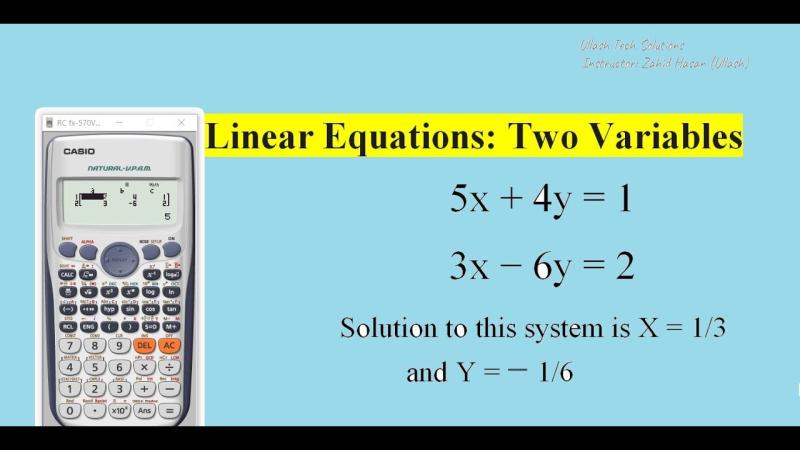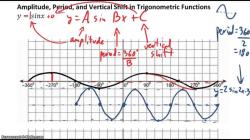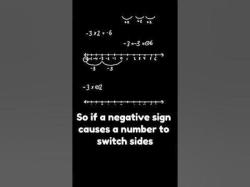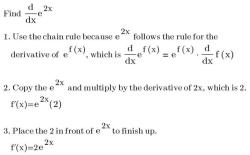How to use the equation of a line calculator?
Using an equation of a line calculator is a straightforward process. The equation of a line is typically expressed in the form , where is the slope and is the y-intercept. Some calculators might use a different notation, such as or , but the principles are the same.
Here are the general steps to use an equation of a line calculator:
Input the Slope ():
- Enter the value of the slope. The slope represents the rate at which the line rises or falls.
Input the Y-Intercept ():
- Enter the value of the y-intercept. The y-intercept is the point where the line intersects the y-axis.
Enter the X-Value (Optional):
- Some calculators allow you to find the y-value for a specific x-value. If you have a particular x-value in mind, enter it into the calculator.
Calculate:
- Press the "Calculate" button or equivalent on the calculator. The calculator will use the entered values to compute the corresponding y-value or display the equation of the line.
Interpret Results:
- Review the results provided by the calculator. If you entered specific x-values, the calculator will give you the corresponding y-values. If you only entered the slope and y-intercept, the calculator may display the equation of the line.
Graphical Representation (Optional):
- Some calculators or online tools may also provide a graphical representation of the line. This can be helpful for visualizing the position and slope of the line.
It's important to note that the specific steps may vary slightly depending on the calculator or tool you are using. If you're using an online calculator, you might find input fields for slope and y-intercept, and you may also have the option to graph the line.
Remember that the equation of a line represents a straight line on a Cartesian coordinate system, and the slope and y-intercept provide essential information about its characteristics. Using an equation of a line calculator is a convenient way to quickly determine values or visualize the line without manually performing the calculations.
Mastering linear equations: A guide to using the line equation calculator
Line equation calculators help you find the equation of a line, given two points on the line, or solve for the slope or y-intercept given the equation of a line.
How to use a line equation calculator
To use a line equation calculator, simply enter the coordinates of the two points on the line, or the equation of the line, into the corresponding fields. The calculator will then display the equation of the line, the slope, and the y-intercept.
Tips and tricks for efficiently utilizing the line equation calculator
Here are a few tips for efficiently utilizing the line equation calculator:
- Double-check your inputs. Before using the calculator, make sure that you have entered the coordinates of the two points on the line, or the equation of the line, correctly.
- Use the calculator to solve a variety of problems. The line equation calculator can be used to solve a variety of problems, such as finding the equation of a tangent line, finding the distance between two points on a line, and determining whether two lines are parallel or perpendicular.
- Explore the calculator's features. Many line equation calculators offer additional features, such as the ability to graph lines and find intersections. Take some time to explore these features to see how they can help you solve problems.
Real-world applications: Solving problems with the equation of a line
Here are a few real-world applications of solving problems with the equation of a line:
- Finding the equation of a budget line: A budget line is a line that represents all possible combinations of goods and services that a consumer can purchase with a given budget. By finding the equation of a budget line, you can determine the most efficient way to spend your money.
- Determining the slope of a demand curve: A demand curve shows the relationship between the price of a good or service and the quantity demanded. The slope of a demand curve can be used to determine how consumers will react to changes in price.
- Predicting future sales: Sales data can be used to create a line equation that can be used to predict future sales. This information can be used to make business decisions, such as how much inventory to order and how to allocate marketing resources.
Understanding the components: Breakdown of the line equation formula
The general form of the line equation is:
y = mx + b
where:
- m is the slope of the line
- b is the y-intercept of the line
- x is the independent variable (typically representing the input)
- y is the dependent variable (typically representing the output)
The slope of the line indicates how much the line rises or falls for every unit increase in x. The y-intercept is the point where the line crosses the y-axis.
Troubleshooting common issues when using a line equation calculator
Here are a few common issues that people encounter when using a line equation calculator:
- The calculator is not displaying the correct answer. Make sure that you have entered the coordinates of the two points on the line, or the equation of the line, correctly. You may also want to try using a different line equation calculator.
- The calculator is not showing the equation of the line in slope-intercept form. Most line equation calculators allow you to choose the format in which the equation is displayed. To display the equation in slope-intercept form, select the "Slope-Intercept" option.
- The calculator is not showing the slope or y-intercept of the line. Some line equation calculators only display the equation of the line. If you need to find the slope or y-intercept of the line, you can use the following formulas:
Slope (m) = (y2 - y1) / (x2 - x1)
Y-intercept (b) = y1 - mx1
I hope this guide is helpful. Please let me know if you have any other questions.
Mastering linear equations: A guide to using the line equation calculator
Line equation calculators help you find the equation of a line, given two points on the line, or solve for the slope or y-intercept given the equation of a line.
How to use a line equation calculator
To use a line equation calculator, simply enter the coordinates of the two points on the line, or the equation of the line, into the corresponding fields. The calculator will then display the equation of the line, the slope, and the y-intercept.
Tips and tricks for efficiently utilizing the line equation calculator
Here are a few tips for efficiently utilizing the line equation calculator:
- Double-check your inputs. Before using the calculator, make sure that you have entered the coordinates of the two points on the line, or the equation of the line, correctly.
- Use the calculator to solve a variety of problems. The line equation calculator can be used to solve a variety of problems, such as finding the equation of a tangent line, finding the distance between two points on a line, and determining whether two lines are parallel or perpendicular.
- Explore the calculator's features. Many line equation calculators offer additional features, such as the ability to graph lines and find intersections. Take some time to explore these features to see how they can help you solve problems.
Real-world applications: Solving problems with the equation of a line
Here are a few real-world applications of solving problems with the equation of a line:
- Finding the equation of a budget line: A budget line is a line that represents all possible combinations of goods and services that a consumer can purchase with a given budget. By finding the equation of a budget line, you can determine the most efficient way to spend your money.
- Determining the slope of a demand curve: A demand curve shows the relationship between the price of a good or service and the quantity demanded. The slope of a demand curve can be used to determine how consumers will react to changes in price.
- Predicting future sales: Sales data can be used to create a line equation that can be used to predict future sales. This information can be used to make business decisions, such as how much inventory to order and how to allocate marketing resources.
Understanding the components: Breakdown of the line equation formula
The general form of the line equation is:
y = mx + b
where:
- m is the slope of the line
- b is the y-intercept of the line
- x is the independent variable (typically representing the input)
- y is the dependent variable (typically representing the output)
The slope of the line indicates how much the line rises or falls for every unit increase in x. The y-intercept is the point where the line crosses the y-axis.
Troubleshooting common issues when using a line equation calculator
Here are a few common issues that people encounter when using a line equation calculator:
- The calculator is not displaying the correct answer. Make sure that you have entered the coordinates of the two points on the line, or the equation of the line, correctly. You may also want to try using a different line equation calculator.
- The calculator is not showing the equation of the line in slope-intercept form. Most line equation calculators allow you to choose the format in which the equation is displayed. To display the equation in slope-intercept form, select the "Slope-Intercept" option.
- The calculator is not showing the slope or y-intercept of the line. Some line equation calculators only display the equation of the line. If you need to find the slope or y-intercept of the line, you can use the following formulas:
Slope (m) = (y2 - y1) / (x2 - x1)
Y-intercept (b) = y1 - mx1













